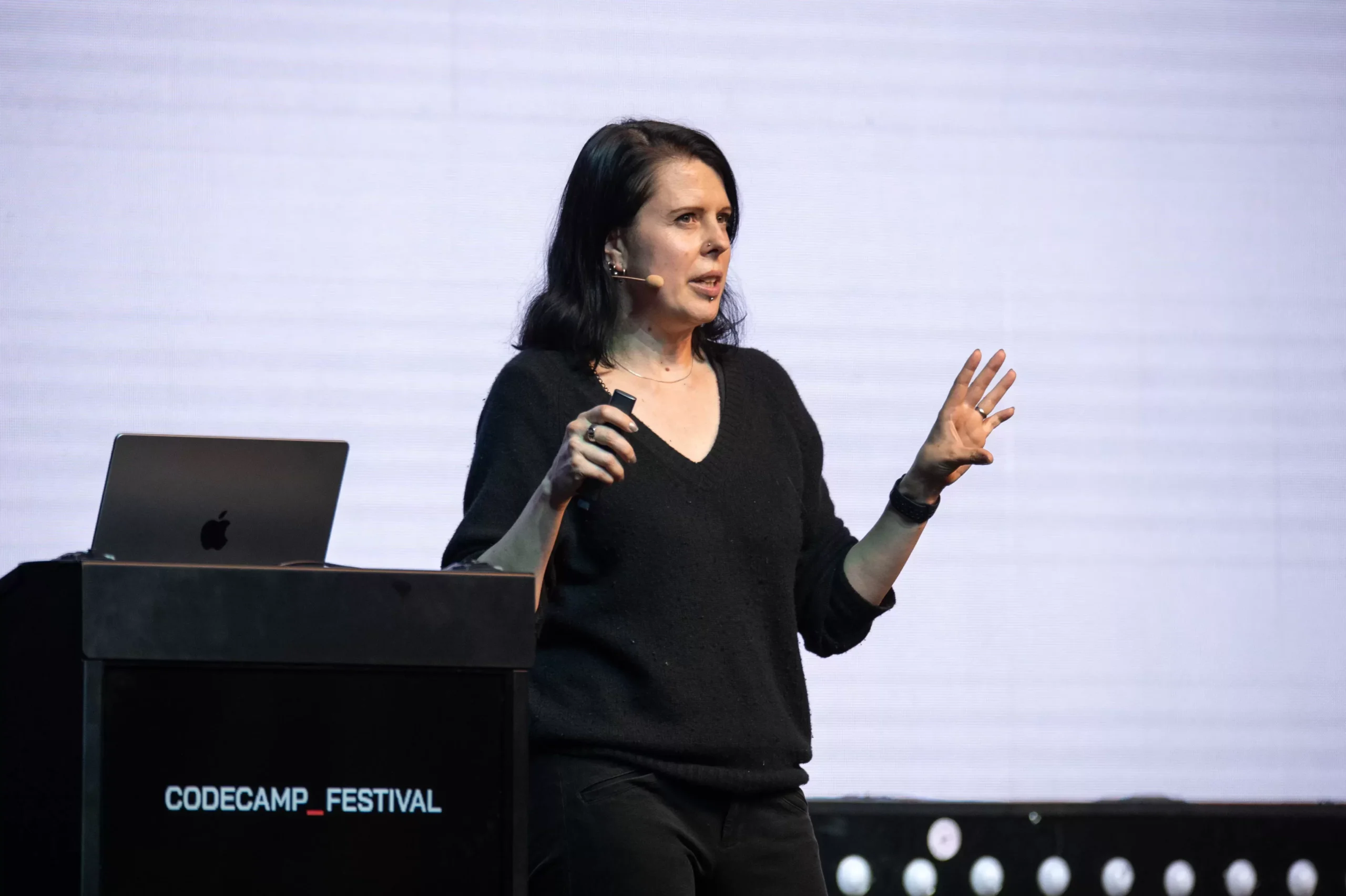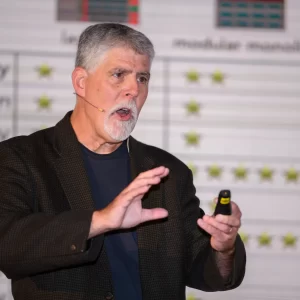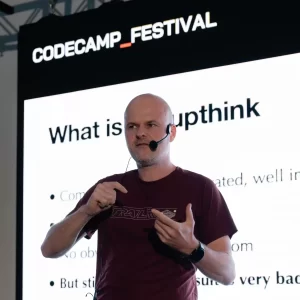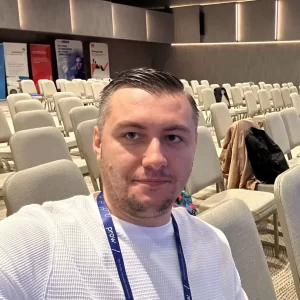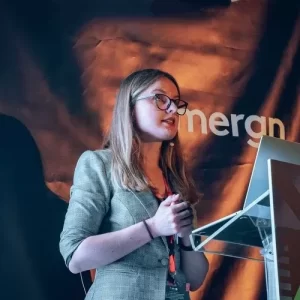The speakers
Join us online for two days dedicated to Java and have all your questions answered by some of the world’s top experts and thought leaders in the field.
Masterclasses


- 13/04/2022
- 15:00 - 16:00
The Well-Grounded Java Developer
The Well-Grounded Java Developer, Second Edition is a complete revision of the classic original with the latest innovations of the Java platform. It upgrades your existing Java skills with both JVM fundamentals like bytecode, and powerful new features such as modules and concurrency models. We’ll meet with Ben Evans, one of the authors, to discuss many of the concepts illustrated in the book, and pick his brain about the state of Java in the industry.
- 13/04/2022
- 16:00 - 17:00
Isn’t the Monolith Just Enough?
Nowadays Microservices is perceived as the bullet proof software architecture choice. Monolithic applications are considered old fashioned. Isn’t there a sweet spot? What really makes us migrate from Monoliths to Microservices? This talk will discuss pros and cons of both approaches and it will help you make better architectural decisions in the future.
- 13/04/2022
- 17:00 - 18:00
How Java catches up on its JVM siblings
For quite a while in the past, the JVM community thought that Java is going to remain a legacy language and make way for new generations of JVM languages. Indeed, new languages like Scala, Kotlin, Groovy, and others, gave a fresh breath to the JVM family, with new features and flavours. Fortunately, this turned out to be an inspiration for Java. The OpenJDK community has been busy in the last years with some great projects that get inspiration from the languages in the family, a couple of which I will happily present in this session.
- 13/04/2022
- 18:00 - 19:00
Mastering the best Refactoring tool on Earth
If you want to write a backend system aimed to survive many decades, you will choose Java not only for its backward compatibility philosophy but also for having the most powerful refactoring tools of all programming languages. Unmatched in this area, IntelliJ (including the free version) offers dozens of refactoring actions and hundreds of inspections that can help you change the design easily and safely. We’ll cover in detail the mechanics of the most frequently used ones, we’ll see how to chain refactoring moves to achieve larger goals, and then we’ll also explore some very complex ones. All, while having lots of fun along the way with a Clean Code maniac😜.
- 14/04/2022
- 14:00 - 15:00
Tradeoffs, Bad Science, and Polar Bears – The World of Java Optimisation
Why can’t we “just make it go faster”? First we need to work out “Faster for whom?” and “Why?”…and “What even is faster?” Holly Cummins takes you through Java optimization principles before bouncing through the pitfalls. Join in to discover why the exact same techniques that make Quarkus rocket fast used to be a terrible idea, why fast benchmarks make for slow programs, and why despite all that, optimization really matters. Along the way, you’ll also dive into measuring things, bad advice, garbage collection, and climate change.
- 14/04/2022
- 15:00 - 16:00
Uncommon Tips for Writing Cleaner Code
As our craft matures, I keep noticing more and more software professionals striving to improve the quality of their work. One of the means towards this goal is the practice of writing clean code, which is getting a lot of attention lately, and developers turn to it in an effort of improving the quality of their output.
In this presentation, I aim to share with you a few less advertised tips relevant to the subject of clean code. Depending on who you are and how you are accustomed to writing code, you may find these tips to be common sense, surprising, or perhaps even shocking. In any case, I hope you find them useful, or at least that they may inspire you to look at certain coding aspects from a different perspective.
- 14/04/2022
- 16:00 - 17:00
360 View on Quarkus
If ( you did not hear about Quarkus ) or ( you did but never actually played with it in a project ) then
This session could be of interest for you;
The session tries to raise awareness about Quarkus capabilities which often are misunderstood, is it just an alternative to Spring Boot (but immature) or is a lot more than that.
We will have some hands-on coding to take a glance into the nice coding features the hopefully other frameworks will adopt in the future.
But we will also do a reality check of using Quarkus in a greenfield project and will look at lessons learn and limitations.
And I will share my humble opinion when it comes to proposing Quarkus as an option for different use-cases (being migration of existing solution or green field projects).
- 14/04/2022
- 17:00 - 18:00
How to increase development productivity with JHipster
JHipster is a set of tools that can help you quickly build web applications. It is composed of two main components: a modern UI framework and an API.
This presentation will provide an overview of JHipster and will walk you through the steps of starting an angular & spring boot application.
- 14/04/2022
- 18:00 - 19:00
The Varieties of Development Experience
Have you ever wondered why it feels like it does to write code? Have you ever stopped and thought “if this is supposed to be such an intellectual exercise, why am experiencing so many emotions, from the heights of elation, to the pits of despair?”.
I have.
Since this first occurred to me years ago I’ve pieced together a theory which I believe gives not only an explanation for such mental states, but also offers a new means of evaluating how we work with software, and perhaps even becoming better at it.
In this session I’ll explain the theory, bringing in the latest views from neuro- and cognitive science. I’ll then consider how it can be applied, not only explaining how it feels to write code, but also interrogating why each of us has such wildly different experiences. In doing so you’ll gain a far deeper understanding of this daily activity, and consequently drive significant personal improvements.
Diamond Partners

Accenture
Accenture Industry X is helping clients reimagine the products they make, and how they make them. Working across multiple industries, we offer the broadest suite of services for digitizing engineering and R&D functions, factory floors and plant operations. Using data and technologies such as AR/VR/XR, cloud, AI, 5G, robotics and digital twins, you’ll work with our clients to design, engineer and manufacture products and services in ways that are more connected, more efficient and more sustainable.

Nagarro
We excel at digital product engineering. We solve complex business challenges through agility and innovation. We call it thinking breakthroughs.

camLine
Welcome to the future of production! Since more than 30 years, we make software solutions that can effectively improve our clients’ ongoing production and steadily maintain manufacturing excellence all the time. We are connected to more industries than you think: semiconductors, electronics, automotive, medical devices, materials science, solar, R&D. Our distributed teams are developing the manufacturing software solutions of tomorrow already today. Be a part of it.

Visma
Visma is a leading provider of core business software for a more efficient and resilient society.
We simplify the work of companies and organisations of all sizes, empowering people and helping businesses grow and thrive.
We have over 1 million customers across the Nordics, Benelux, Central and Eastern Europe, and Latin America who share our passion to make progress happen.

Grab
Grab is Asia’s Leadin Online to Offline (O2O) mobile platform. Grab is region’s everyday super app that provides services that matter the most to consumers. Through its open platform strategy, Grab works with partners to provide safe, accessible and affordable transport, food, package, grocery delivery, mobile payment and financial services to millions of Southeast Asians. Grab aims to create 100 million micro-entrepreneurs through its ecosystems.

Levi9
We, Levi9, are a devoted team that proves to be the technology partner of choice with the highest customer satisfaction.
Each of us, and all together, we strive to achieve more every time we deliver high-quality software, smart integrations, innovative solutions, and digital strategies. Since 2007, our team of over 170+ dedicated levi niners here in Iași is a living example of how brilliant minds team up to drive innovation for global tech leaders, consistently exceeding expectations through quality and craftsmanship.
What sets us apart? Our empowerment combined with our culture, and our expertise makes us the easiest to work with partner for developing software solutions. Our customers’ trust, a supportive work environment, and access to the latest technologies set you on a clear path to grow and excel.
Don’t miss us at Codecamp and see it for yourself!
Supported by

RWS
Take global content and ideas further. Create meaningful connections with customers through global content and idea management.

